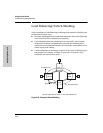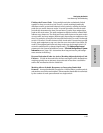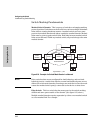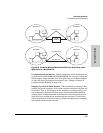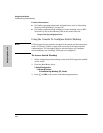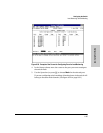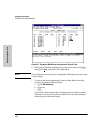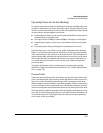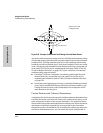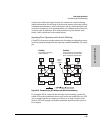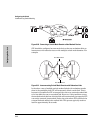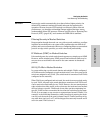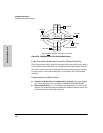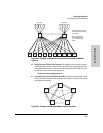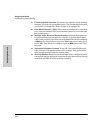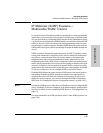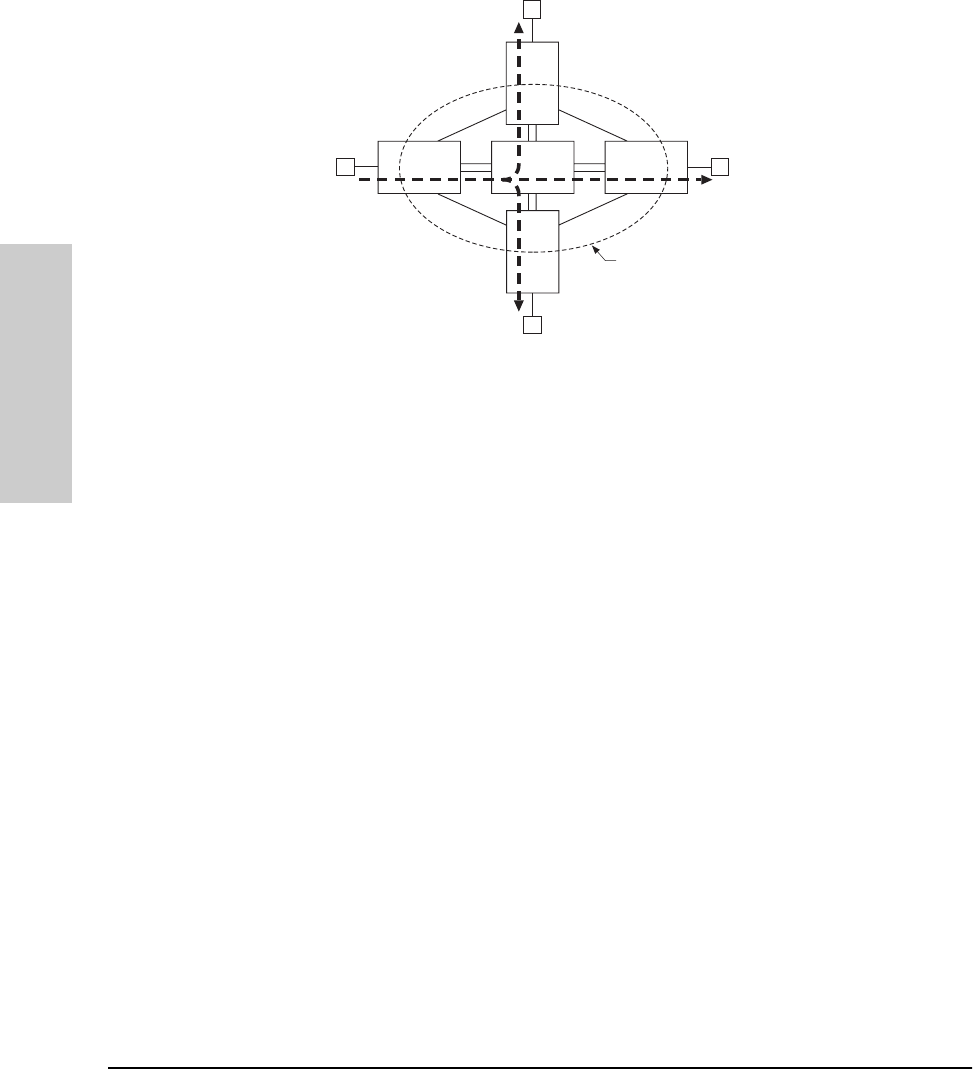
6-88
Configuring the Switch
Load Balancing: Switch Meshing
Configuring the Switch
Figure 6-58. Example of a Broadcast Path Through a Switch Mesh Domain
Any mesh switches that are not edge switches will flood the broadcast packets
only through ports (paths) that link to separate edge switches in the controlled
broadcast tree. The edge switches that receive the broadcast will flood the
broadcast out all non-meshed ports. (Note that if multiple VLANs are config-
ured, a broadcast path through the mesh domain leads only to ports that are
in the same VLAN as the device originating the broadcast. Refer to”802.1Q
VLANs in Meshed Switches” on page 6-91.) Some variations on broadcast/
multicast traffic patterns include:
■ If multiple VLANs are configured, a broadcast path through the mesh
domain leads only to ports that are in the same VLAN as the device
originating the broadcast. Refer to”802.1Q VLANs in Meshed Switches”
on page 6-91.
■ Broadcast control features such as layer 3 (Automatic Broadcast Control)
proxy replies and RIP/SAP filtering will reduce broadcast traffic by pre-
venting the need for many of the broadcasts from crossing the switch
mesh domain in the first place.
Unicast Packets with Unknown Destinations
A meshed switch receiving a unicast packet with an unknown destination does
not flood the packet onto the mesh. Instead, the switch sends a query on the
mesh to learn the location of the unicast destination. The meshed switches
then send 802.2 test packets through their non-meshed ports. When the unicast
destination is found and reported, the unicast packet is then forwarded
through the mesh to its destination. By increasing the Address Age Interval in
the System Information screen, you can cause the switch address table to
W
W
W
W
Switch Mesh Domain
A
B
C
D
E
Switches A, B, C, & D
are Edge Switches



